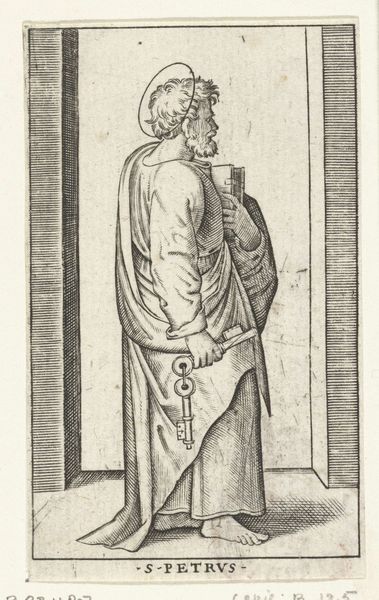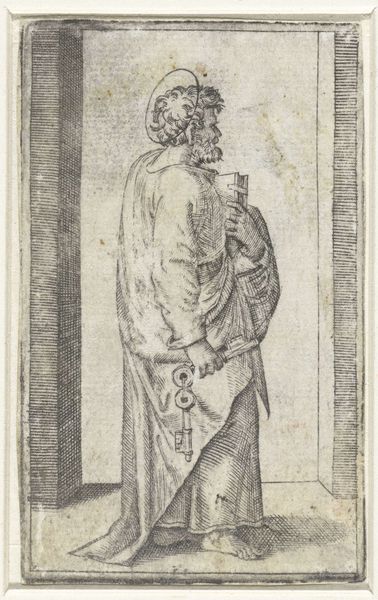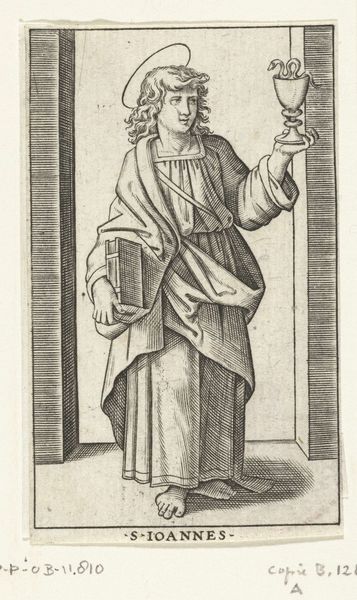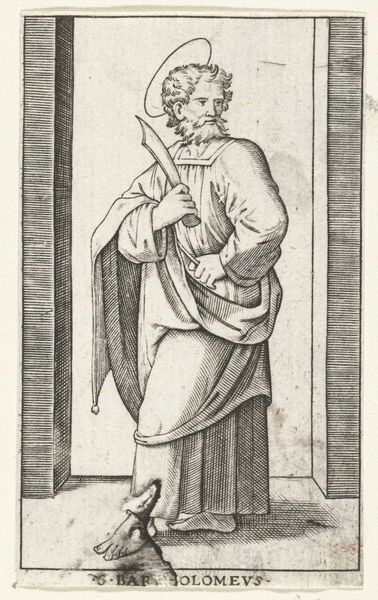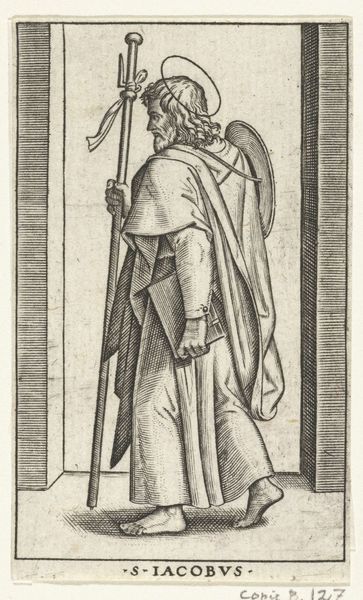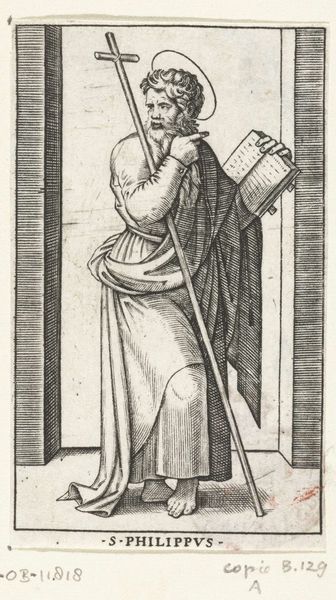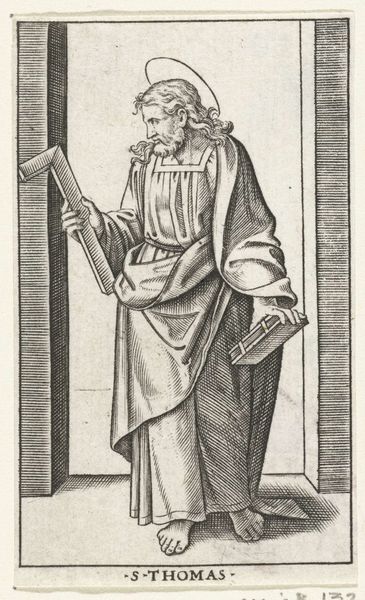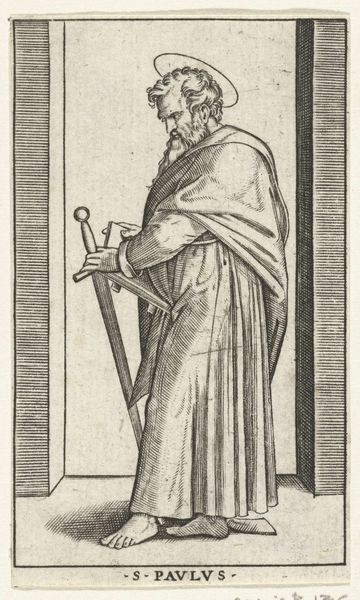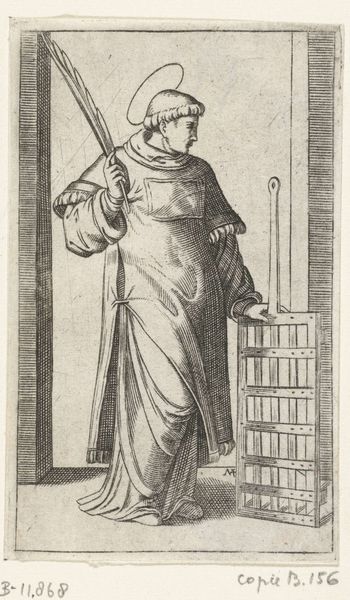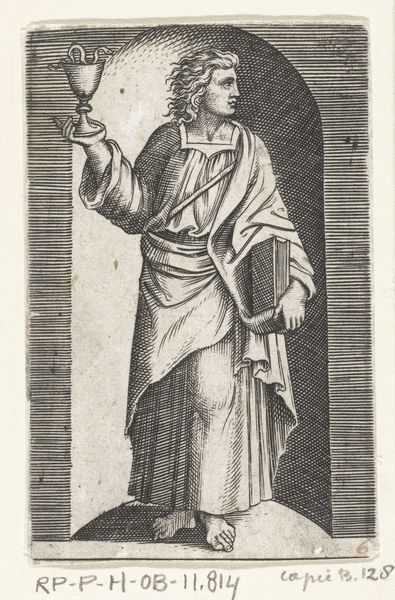
print, engraving
#
portrait
# print
#
figuration
#
history-painting
#
northern-renaissance
#
engraving
Dimensions: height 85 mm, width 53 mm
Copyright: Rijks Museum: Open Domain
This is a small, finely detailed print, depicting the Apostle Peter, made by an anonymous artist. It's created using a process called etching. The artist would have coated a metal plate with a waxy, acid-resistant substance, then scratched an image into it with a needle. Next, they’d immerse the plate in acid, which bites into the exposed metal, creating delicate lines. The character and meaning of this print hinges on this technique. The etched line has a particular quality: controlled, yet with a slight ‘fuzziness’ that gives the image a subtle dynamism. The texture invites close inspection and a sense of intimacy. Note how the parallel lines create tone and volume, describing the fall of the drapery, and the saint’s features. Prints like this were relatively inexpensive and easily reproduced, making religious imagery accessible to a broad audience. The keys, of course, are Saint Peter's attribute, symbolizing his role as the keeper of the gates of Heaven. So, we can see how a precise and repeatable process, like etching, could help disseminate spiritual and cultural authority. It shows how technique and belief can be deeply intertwined.
Comments
No comments
Be the first to comment and join the conversation on the ultimate creative platform.
